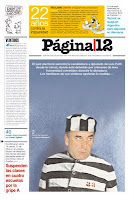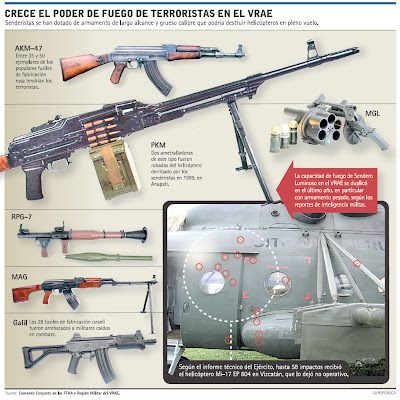I've bought a trio of Latin America-related photography books in the past year.
The first is a very slim volume, just 70 pages.
Resistencia: Portraits of Colombia is the catalogue for an exhibition which took place at the
Photographers' Gallery in London and was produced in collaboration with human rights organisation
Justice for Colombia. It's a series of portraits of contemporary Colombians - children,
campesinos, pregnant prisoners, heavily-armed soldiers, couples and families. Most of them are posed and staring straight at the camera, establishing a relationship with the viewer. One of the few images which does not feature a human subject is of a graffitied wall demanding "Mas Chavez menos Bush" (More Chavez less Bush). Well, Bush has gone in any case, but I think you get the point.
At £10, this book is a bargain and the printing quality is decent, although it's obviously soft cover. It's an interesting insight into the impact of Colombia's long conflict. The connection with NGO Justice for Colombia reveals that the images have a consciousness-raising purpose - but this doesn't make them boring. A broad range of society is represented here and the images are allowed to take centre stage, enhanced by small background notes on their subjects.
We then go back in time to
The New World's Old World: Photographic Views of Ancient America (ed. May Castleberry, University of New Mexico Press). This one was published in conjunction with a 2003 exhibition at the AXA gallery in New York. It unites photography of ancient sites from the South of the United States to Bolivia via Mexico and Peru.
The images span over a century from the 1870s to the 1980s, and are all black and white. Some of them are truly stunning - as a Peruvian specialist it's not surprising that I want to name Martin Chambi's iconic shots of Machu Picchu, but I was also introduced to the likes of Timothy H. O'Sullivan's images of ancient ruins in Arizona (those rock strata!) and Paul de Rosti's Mexican temples. Photography of architecture and natural features is not my usual favourite: I prefer lively images with plenty of human interest. But these have almost won me over. They have beauty, drama, majesty and mystery. Aside from that, the book is a boon for the academically-minded. It contains essays by May Castleberry, Kathleen Stewart Howe and Martha A. Sandweiss, a list of photographer and image details, and a detailed bibliography.

Finally, I bravely bore the pain in my wallet (50 euros!) and my arms and bought and lugged home Susan Meiselas' hefty
In History. If size makes a coffee table book, this qualifies. Meiselas is justifiably famous for her work in Nicaragua, El Salvador, and elsewhere, and this book combines a number of these well-known projects with some updated pieces. It also contains chapters by some of my academic idols: Abigail Solomon-Godeau, Diana Taylor, and Elizabeth Edwards, among others.
Meiselas is a photographic genius. Apologies for the hyperbole, but I know of very few photographers who can capture human emotion so truthfully, and yet so stunningly. Plus, this volume is all about memory; the link between the past, present, and future; the nature of the photographic image itself, and social engagement. It's
Memory in Latin America's crack. Ah-hem. My only quibble would be the price: it's likely a very fair price for such a large book with so many full-colour photographs, but nevertheless it's out of many people's reach, clearly. I thought twice about it and I must be the absolute target audience for such a book. Fortunately Meiselas does have rather
a good website.
So, when you review three books, aren't you supposed to rubbish at least one of them? Sorry about that; I'm very pleased with all my purchases. If you're looking for a worthy addition to your bookshelf, you could do much worse than one of these publications, according to your own particular interests.
















